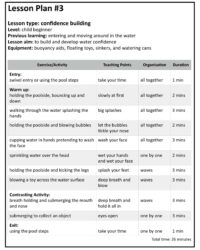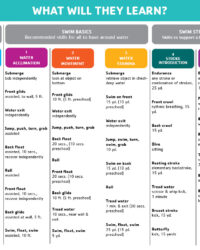Who would have thought that a simple game of Xs and Os could be such a powerful educational tool? Tic Tac Toe, a game universally known and loved, offers far more than just a quick way to pass the time. Its straightforward rules and engaging nature make it an incredible foundation for building dynamic and effective lesson plans across various subjects and age groups. Imagine turning complex concepts into an interactive challenge, where students actively participate and learn without even realizing they’re in a classroom setting.
This timeless game provides a fantastic framework for fostering strategic thinking, quick recall, and collaborative learning. By transforming traditional worksheets or rote memorization into a fun, competitive activity, you can significantly boost student engagement and retention. Whether you’re teaching math facts, vocabulary, historical dates, or scientific principles, adapting the tic tac toe format can revolutionize your classroom approach, making learning memorable and genuinely enjoyable for everyone involved.
Crafting Your Engaging Tic Tac Toe Lesson Plan Template
Designing a tic tac toe lesson plan template is all about creativity and understanding your learning objectives. The beauty of this approach lies in its adaptability. You start with the basic 3×3 grid, but instead of simply placing Xs and Os, students earn their spot on the grid by correctly answering a question, solving a problem, or completing a task related to your lesson. This turns every move into a learning opportunity, requiring students to demonstrate their knowledge to progress in the game. It’s a fantastic way to differentiate instruction too, as you can tailor the difficulty of the questions to suit various learning levels within your classroom.
To make your template truly effective, consider the core components that will guide both you and your students. Think about clearly defined learning objectives – what specific skills or knowledge do you want students to master by the end of the game? What materials will you need? Will it be digital or paper-based? How will you group students? These are crucial details that will ensure a smooth and productive activity. The procedures should be explicit, outlining how turns are taken, how points are scored (if applicable), and what happens if a question is answered incorrectly. Having a well-thought-out structure prevents confusion and maximizes learning time.
One of the most exciting aspects of using a tic tac toe lesson plan template is its incredible versatility across the curriculum. It’s not just for one subject; it can be integrated into almost anything you teach. For instance, in a language arts class, students might answer questions about character analysis or grammar rules. In science, they could identify parts of a cell or steps in an experiment. The possibilities are truly endless, limited only by your imagination. This cross-curricular application means you can develop a core template and then easily modify the content for different units, saving you preparation time in the long run.
When you’re building out your template, think about incorporating elements that encourage more than just recall. Can students explain their answers? Can they collaborate on a problem before answering? Adding these layers deepens the learning experience. Moreover, don’t forget the assessment piece. How will you gauge understanding? Will you use observation, collect their game sheets, or have a post-game discussion? A robust template considers all these elements, making it a comprehensive tool for both teaching and evaluation.
Adapting for Different Learning Styles
Understanding that every student learns differently is key to effective teaching. A tic tac toe template can be modified to appeal to visual, auditory, and kinesthetic learners. For visual learners, include diagrams, maps, or pictures as part of the questions. For auditory learners, you might read questions aloud or have students discuss answers before placing their mark. Kinesthetic learners could benefit from physically moving game pieces or interacting with a large floor-based grid.
Enhancing the Challenge
To keep the game fresh and exciting, consider variations beyond the standard 3×3 grid. You could introduce a 4×4 grid for longer games or more complex topics. Add special “wildcard” squares where students perform a creative task or answer a bonus question for an extra turn. Think about making it a team versus team challenge to foster collaboration, or even individual play for focused practice. The more you experiment, the more engaging your tic tac toe lesson plan template will become.
Implementing Your Template for Maximum Impact
Bringing your meticulously designed tic tac toe lesson plan template into the classroom is where the magic truly happens. Start by clearly explaining the rules and objectives to your students. It’s helpful to do a quick demo round so everyone understands how the game flows. Emphasize that the primary goal is learning, not just winning. You’ll often find that students, fueled by the competitive element, become incredibly motivated to answer correctly, leading to deeper engagement with the material than traditional methods might achieve.
Consider the physical setup. Will students play in small groups at desks, or will you use a larger whiteboard or projector for a whole-class game? Group play can encourage peer tutoring and discussion, while a whole-class game allows you to facilitate and provide immediate feedback to everyone. Remember to circulate around the room, offering guidance, clarifying questions, and observing student understanding. This active facilitation ensures that the game remains a productive learning activity rather than just a distraction.
After the game, take time for reflection. This is a crucial step that often gets overlooked. Discuss what students learned, what challenges they faced, and what strategies they employed. You might even have them explain their reasoning for certain answers. This debriefing reinforces the learning and allows you to gauge comprehension beyond simply correct answers. It also provides valuable feedback for you, helping you refine your tic tac toe lesson plan template for future use, ensuring it continues to be a powerful and evolving teaching tool.
- Increased Student Engagement: The game format naturally captures attention and maintains interest.
- Enhanced Recall and Application: Students actively retrieve and apply knowledge to make their moves.
- Improved Critical Thinking: Players must strategize not just for their turn, but to block opponents.
- Versatile Content Adaptation: Easily fits diverse subjects, topics, and learning levels.
- Promotes Collaboration: When played in teams, it encourages peer discussion and problem-solving.
- Instant Formative Assessment: Allows teachers to quickly identify areas where students need more support.
Embracing innovative teaching methods like those built around the tic tac toe game can truly transform your classroom environment. It moves beyond passive learning, inviting students to become active participants in their educational journey. This shift not only makes lessons more enjoyable but also significantly improves the retention of information and the development of essential skills.
By integrating a fun, familiar structure into your teaching, you create a vibrant and effective learning space where students are eager to demonstrate their knowledge and grow. The ripple effect of such an engaging approach extends far beyond a single lesson, fostering a love for learning that lasts a lifetime.


